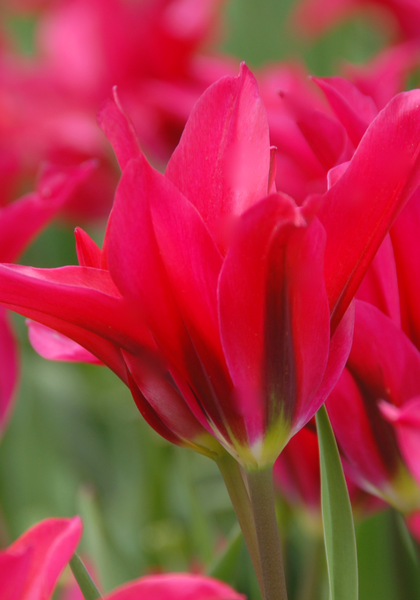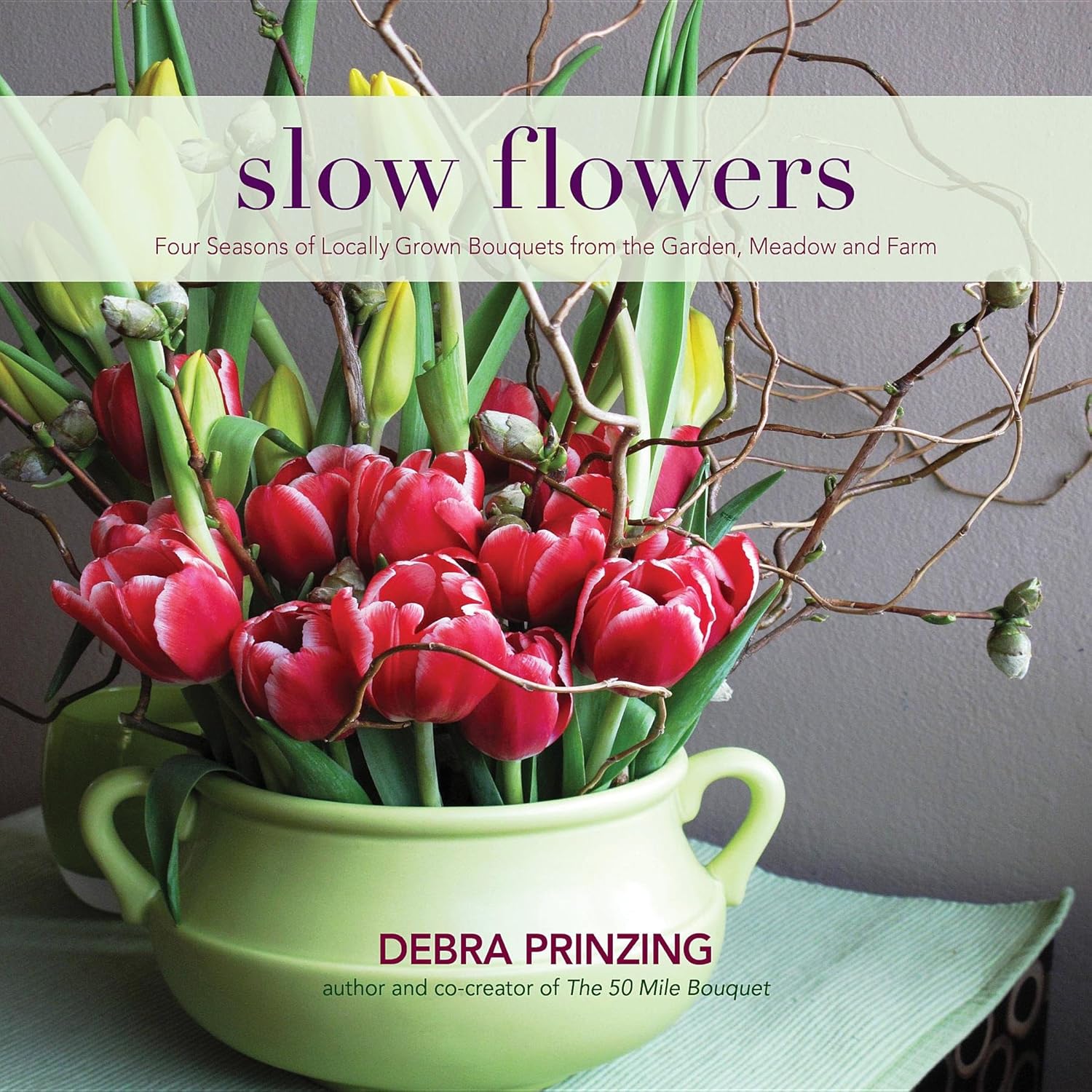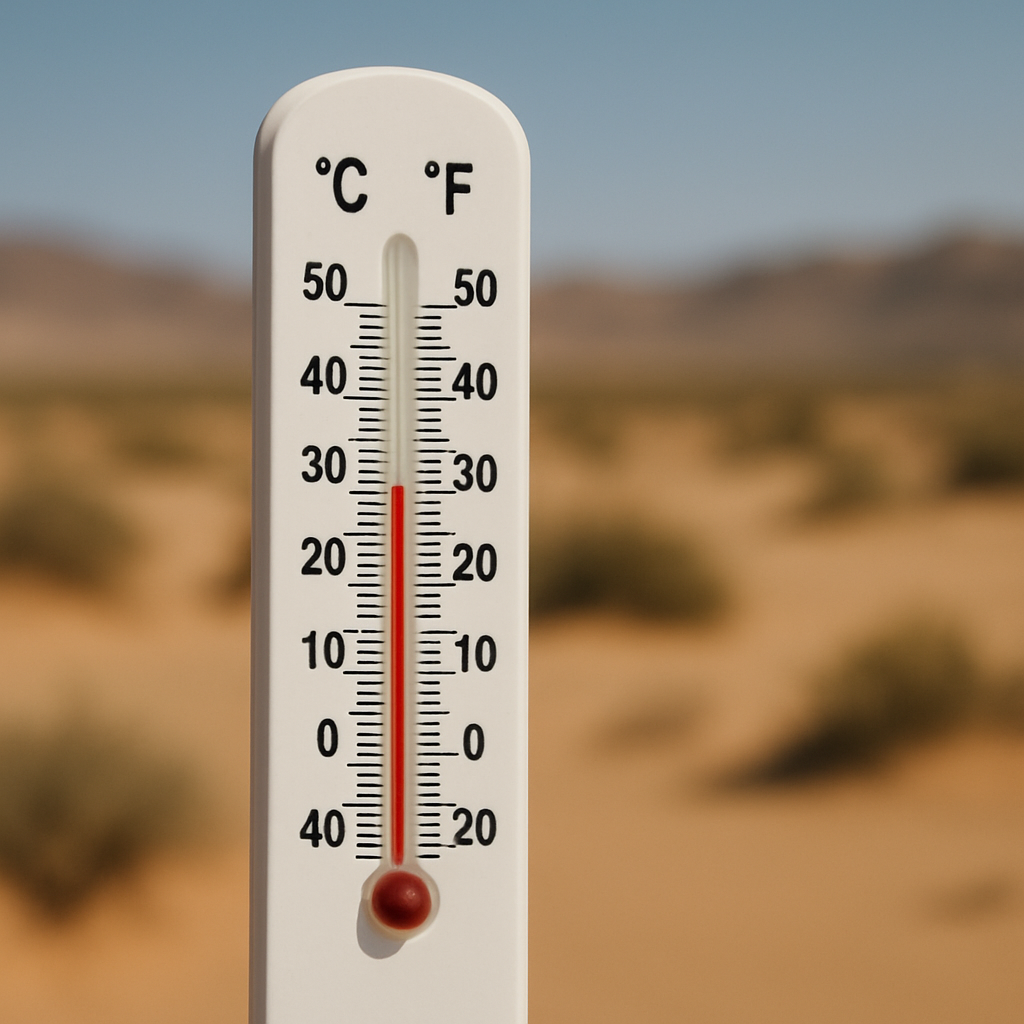|
We’ve had a couple of very hot weeks here in Michigan but temperatures are back to normal summer heat, at least for now. Our intrepid gardeners and growers worked early or late in the day and managed to keep up with weeding, fertilising, pest-patrolling, and yes, watering! We know many areas across the country have been dealing with heat, tornados, deluges or droughts…we’re hoping that you and your garden have experienced lovely summer days and are thriving. If so, we’d love to see pictures of your favorites so far – and if not, we’ll end with some of our observations from over 25 years of bulb-growing, and email us with any questions and concerns.
|
|
The good news: we plan to start digging, cleaning and trimming tubers and filling summer orders on Monday, July 14. The head’s up: we’ll only be accepting new orders through noon (Eastern Time) on Wednesday, July 30, so don’t put off ordering much longer. We’ve sold out of 3 iris and 5 daylily varieties, but you can still get many of our customer favorites - some of which weren’t available in the spring. Don’t miss 16th-century iris pallida Dalmatica and ‘Florentina’, smoke-and-lavender ‘Quaker Lady’, and sturdy charmers ‘Honorabile’ and ‘Coronation’. Daylilies remaining include everything from 5-7’ tall ‘Autumn Minaret’, long-blooming ‘August Pioneer’, rare and lustrous ‘Libby Finch’, to richly-colored ‘Theron’ and ‘Royal Beauty’. And if you just can’t decide, our ever-popular samplers will be sure to please – find them listed at the beginning of the iris and daylily sections respectively.
|
|
In her book Slow Flowers, Debra Prinzing showed how she created a bouquet every week of the year using only flowers, foliage, twigs, fruit, and seed pods from her yard or grown within a few miles of her Oregon home. She shares that “one of the most important things you can do is give stems clean water. . . . My friend Lorene Edwards Forkner shared this easy water-changing trick: Place the entire arrangement in the kitchen sink. Gently lift the foliage at one edge of the vase so the faucet’s spray nozzle is directed inside. Turn on the water and let it flow for a minute or two. The existing water will begin to overflow and go down the drain, displaced by fresh water that now occupies the vase. . . . Do this every day or two for the life of the arrangement.”
For lots more advice, see our “Bulbs in Bouquets” page at our website.
|
|
“Hotter-than-usual” summers are getting to be the norm for much of the country, and while some areas this year have had a lot more rain than usual, others are too dry. How will this affect your bulbs? We’ve learned over the years that it depends on where you live and what you’re growing.
For dahlias, planting in cool, wet soil can cause tubers to fail to sprout, so we advise waiting till warmer temperatures have arrived and being careful not to over-water. Once they’re up and growing, though, dahlias need to be watered if rain is infrequent. Because they’re native to the highlands of Mexico where days can be hot but nights are much cooler, long-lasting heat waves can actually slow their growth…and many dahlias just won’t make it in zones warmer than 7b(10bWC). But once cooler night temperatures arrive, they usually kick back into gear and go on to bloom gloriously till frost. (And for dahlias that can handle warm nights better, look for “heat-tolerant” in our descriptions – although even these have their limits.)
Gladiolus in hot summers can be attacked by tiny, almost invisible sucking insects called thrips. Thrips proliferate when it’s hot and can leave glad leaves and blossoms mottled, or even prevent buds from opening. If your glads or crocosmia have pale or rusty streaks on their leaves, don’t delay – see oldhousegardens.com/Thrips for tips on control. Glads may also develop kinked stems in hot weather, as they sag a bit during the day and then grow upright at night when evaporation slows. To minimize the kinks, keep your glads well-watered and avoid damaging their shallow, wide-spreading roots.
As long as the soil is not too dry, lilies do well in heat, though if your summer is unusually hot, you may notice that the flowers don’t lasted as long as they usually do, and some varieties – such as ‘Pink Perfection’ and ‘African Queen’– may not be as richly colored.
Peonies usually like ample water, but warm, humid conditions can spur the growth of mildew and fungal diseases that disfigure their leaves and rot their stalks. At the first sign of these problems, remove the diseased tissue and throw it in the trash, not the compost. Then sterilize your pruning shears with bleach or alcohol before moving on to another plant.
Bulbs are one of Nature’s clever survival strategies. They’re essentially underground bunkers where the plant can stay cool and store moisture. Some bulbs even prefer dry summers. Tulips and hyacinths, for example, evolved in parts of the world with little to no summer rainfall. That means that a dry summer may result in their returning better than usual next spring – at least if you’re in the eastern half of the country where normal summers are rainier. But there can be too much of a good thing: since most spring-blooming bulbs start growing roots in late summer or early fall, they will appreciate moister soils then.
And of course some bulbs like it hot. As long as you’ve kept them well watered, your tuberoses, rain lilies, crinums, and cannas are probably thriving this summer!
Bulbs can be remarkably resilient, so try not to worry! They have been dealing with challenging weather for millennia. And there’s always next year — which, as every gardener knows, is one of the great things about gardening.
|























